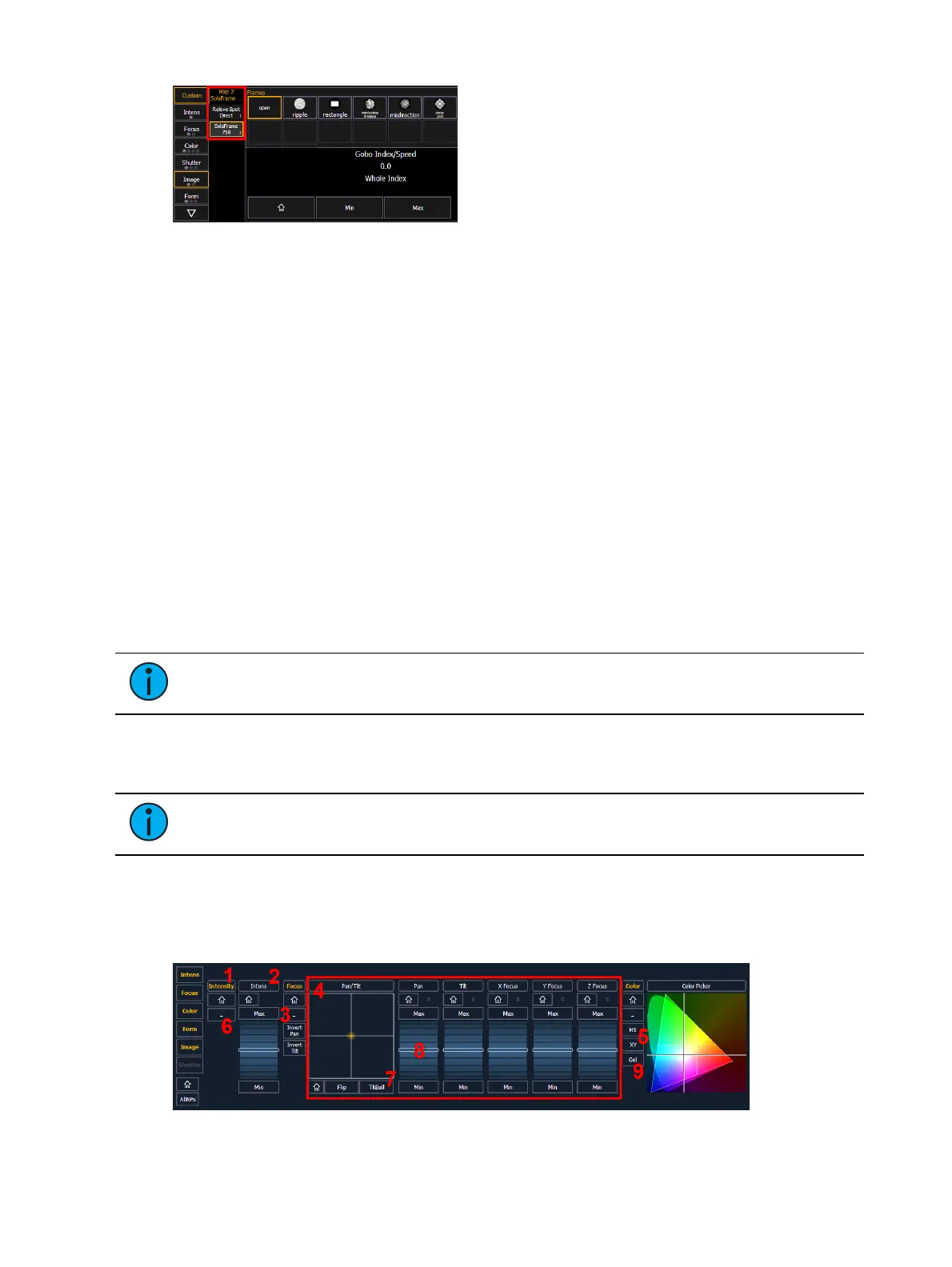System Basics 127
If multiple fixture types are selected at once, encoder maps will stack in the encoder display,
allowing you to select them individually. This includes any default maps for selected fixtures
without custom maps assigned to them.
Multi-Fixture Maps
Maps can also be assigned to more than one device type, which can be useful if two or more
fixtures are often used together. Simply assign additional device profiles when creating a
fixture-specific map. Now when these fixtures are selected, Eos will prioritize the multi-fixture
map over any individual fixture maps or defaults.
User-Specific Maps
Custom encoder maps can also be specified to the user level. When creating or editing a map,
assign it to a specific user number via {Filter To Users}, or by selecting in the Filter To Users
column. As with device profiles, multiple user numbers can be selected. Once specified, only
matching users will have access to that encoder map.
Moving Light Controls
A display tool for controlling the non-intensity parameters (NPs) of multiple parameter devices
is the ML Controls. The MLControls are on Tab 5.
On Element 2, the display can be opened in the CIAby pressing the [MLControls] button.
Note:
A pop-up window version of the MLControls can be opened for quick access
of these controls. See Pop-up MLControls (on page95)
You will need to have a multi-parameter device selected to properly view this display. The
display will change based on the device selected. If you have a device that only has intensity
and color parameters, the ML Control display will only show intensity and color parameters.
Note:
Controls available in this display will change based on the fixture selected.
When there is room, multiple rows of parameters will display, and you can scroll the display
vertically.
There are category shortcut keys on the left side of the MLControls display. Press a key to
quickly access those controls.

